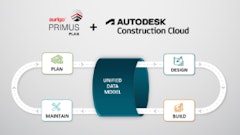
Here, based on research, National Pavement Expo (NPE) seminars, and conversations with industry contractors and consultants are 18 of the most-common mistakes contractors make before, during and after the hiring process – and tips on how those mistakes can be avoided.
Mistake #1: Hiring at the wrong time. When you’re under the gun in the heart of the season, chances are you’ll take on any warm body that shows up in the morning. But that approach isn’t going to help you long term. “Hiring is a year-round job even if you’re a seasonal operation,” says Jeff Stokes, Next Level Contractor System and NPE speaker.
Avoid By: Always be hiring. Consultants and contractors say the best time to be hiring – well, first of all you should always be on the lookout for prospective employees – but the best time is when you don’t need anyone. That way you can be more selective and have a better chance of getting the type of employee you want.
“If you haven’t been pursuing hiring all year and you need a worker in July, odds are you’re not going to get the best person. You need to work the hiring process in advance and throughout the year to be able to have the best hiring options and be able to make the best hiring decision,” Stokes says.
Also, contractors say hiring in the offseason before your work starts enables you to fish in a better-stocked pond. And if you can actually hire people before you have work – in other words before other contractors hire them – you’re ahead of the game.
Brad Humphrey, Pinnacle Development Group and NPE speaker, recommends hiring year-round but focusing heavily on the process in the offseason when many construction workers are out of work. “That’s the time you can find quality people,” Humphrey says. “You might have to put them on the payroll a few weeks early to get them to commit, but a few weeks’ worth of salary to bring in a quality worker who is going to help you succeed in the field is a small price to pay.”
Mistake #2: Not throwing a wide-enough net to find prospects.
Avoid By: Utilizing all outreach available. In this day and age, there are any number of ways to find prospects – and you should use them all. Job fairs, visits to local tech schools or community colleges, referrals from family and friends, referral bonuses to employees, social media, Craigslist ads, even newspaper ads, all reach a different segment of the working population. Closing the door on too many options restricts the number of people you will reach. Maybe you can’t do all of these all the time (though why not?) but you should at least work through them all regularly.
“Most contractors haven’t formed relationships with the places they’re going to find the best candidates, places like high schools, community colleges and junior colleges and technical or trade schools,” Stokes says. “Because they haven’t developed those relationships, they end up hiring candidates that otherwise would be ‘unhirable’ for them as opposed to the ‘hirable’ candidates who have not only already had some training but have also demonstrated some level of commitment, effort and responsibility.”
Mistake #3: Not being clear – either internally or to the new hire – what you are hiring for.
Avoid By: Using clear, updated job descriptions. Yes, this means you have to develop descriptions for each position in your company, but you should have those anyway. You can’t expect to fill a slot with the ideal candidate if you can’t define – to you or the prospect – what that slot is. Note that job descriptions need to be modified as the company grows or as you add new services. Each job description should include time commitments and growth opportunities.
Mistake #4: Rely on poor interviewing skills.
Avoid By: Learning how to interview or hiring a professional to interview for you. Prospects, bad ones or good ones, can be sharp and they’ll pick up on signals you send during the interview. You want them to reveal information about themselves – and you don’t want to tip them off on what you want to hear. You also don’t want to lead them to an answer or provide them an “out” when they struggle.
Interviewing should be viewed as an honest effort by both parties to find a good employment match. But if you don’t know how to interview, you could easily end up with an employee unsuited to the job but who figured out what you needed to hear to get hired.
Stokes says that too many contractors end up hiring the wrong person simply because they didn’t ask the right question, didn’t ask the right question in the best way, or inadvertently “led” the job seeker along to get the answer the employer was looking for. “It simply could be that many contractors and the people they tap to do interviewing and hiring are not sophisticated enough to conduct a quality interview,” Stokes says.
Mistake #5: Not checking – or even asking for – references.
Avoid By: Asking for them and then making the calls. This seems simple, but many employers don’t take the time to make the calls that can help them screen out – or in – workers. “Who would give me a reference that’s going to give them a bad review?” is a common excuse, but you’d be surprised. And, just like you might learn a reason to reject a prospect, you might find out why a fringe candidate has more potential than you saw.
Mistake #6: Not providing reasons for people to join your company.
Avoid By: Delineate specifically why a prospect should join your team. This certainly includes salary and benefits, but you should also reference culture, advancement opportunities and any other positive aspect that might make you attractive to an applicant.
Mistake #7: Not offering enough hours to workers.
Avoid By: Finding ways to increase hours. Most people who work construction want the hours, so your company needs to be able to provide them. That might mean finding more work, adding more services, subcontracting less or any combination of those and other options.
“The $1 million companies struggle and are always complaining about help. But the fact is they often don’t have enough work for the people they already have,” Stokes says. “If that’s the case, they’re not going to attract the best people.”
He says some contractors try to solve the low-hours problem by cross-training crews. “The problem is most workers don’t want to jump from one type of work to another day after day. They want to get good at something and not be a jack-of-all-trades at a bunch of skills they can perform but aren’t really good at.”
Mistake #8: Don’t embrace technology.
Avoid By: Upgrading your technology. As the labor pool – from field workers to supervisors, sales people and managers – gets younger, technology becomes more important. And that’s even ignoring any improvements technology can provide.
“I don’t think Millennials look at construction naturally because they are very computer literate and feel more comfortable working with all sorts of electronics,” Humphrey says. “That’s why I think that contractors who have embraced technology – and that means smart phones and tablets among other technologies – have an advantage in hiring and retaining workers.”
Mistake #9: Hiring skills instead of character.
Avoid By: Paying closer attention to a prospect’s personality and character than the skills he possesses. “It’s difficult to develop character traits if they don’t have them, but if they are of sound character you can build skills,” Humphrey says.
Mistake #10: Confusing hiring a field worker with hiring a manager.
Avoid By: Matching the job needs and skills to the person and his or her characteristics. Not everyone is suited for management or supervisory work – just as not everyone is suited to field work. When you’re looking to fill a position make sure to pursue the type of person that matches the position.
Mistake #11: Don’t beg a prospect to fit a role.
Avoid By: Recognizing personality traits and skill levels and positioning employees for success based on their ability. One sure way to lose a solid and content worker, is to move him into a position you need filled but which he is unable or uninterested in filling.
Mistake #12: Shortchanging prospects.
Avoid By: Keeping an open mind, not only when hiring, but once you’ve decided to bring a person on board. The guy you think might become a skilled lute man might just be your next paver operator or even, eventually, supervisor. Be open to your employees’ interests and growth and provide them the opportunity to move up when they can.
Mistake #13: Not paying enough in wages.
Avoid By: Setting an appropriate and competitive pay scale. You don’t have to far outpace your competition when it comes to the wages you pay, but you do need to pay at least what the market is paying. Contractors who continually pay below-market wages not only have the least-qualified and least-productive employees, but they are also the contractors always in need of new workers. Why? Because their workers either moved out of the industry or went to the competition.
“This is why it’s so hard for the little guy to make it,” Stokes says. “If he’s out there paying $4 an hour less than other guys in town, he’s probably defending it by saying he’s a small guy and can’t afford to pay more. But that doesn’t matter because those workers have other places to go. So even if the small guy manages to hire quality people, they eventually will leave for greener pastures across town.”
Mistake #14: Don’t provide training.
Avoid By: Training. How many people do you know who don’t want to do a good job? How many do you know who don’t want to learn new skills? In theory you’ve hired people who want both – so make sure to provide them a chance to learn, grow and develop so they can help your company do the same. Not only will your work quality improve, but so will efficiency on the job and quite possibly you’ll have fewer equipment issues. Plus, by providing training, you’ll be able to better identify the people who “can” and who are interested in staying with and moving up within your company.
“Not training new workers is the biggest mistake contractors make once employees are hired,” Humphrey says. “Employers have good intentions, but they’re so busy that they stick the new employee on a crew and tell him to watch what the crew does and try to keep up with them. I’ve always felt that for the first week or two, that new employee is not going to be contributing much to productivity anyway so why not use that unproductive time to train him so he can be more productive more quickly?
“That’s where most contractors fall down – they’re doers and not trainers,” Humphrey says. “You can’t just make people feel good, you have to teach them so they become good at what they do, so they can take some pride in their work and so they want to learn more and do better for your company.”
Mistake #15: Don’t provide a career path.
Avoid By: Defining in writing a path to advancement. Stokes says that while training is important, many people – Millennials in particular – want competitive pay, a balance of work and personal life and a career path. “This certainly includes training but more importantly shows a true path to the next level,” he says. “A recent survey of contractors showed that only 19% have a defined career path plan in place. While they want training, they more importantly want to know where the training is going to take them.”
Mistake #16: Be afraid of losing employees.
Avoid By: Changing your mind-set. A common excuse for not training people is, “As soon as I’ve trained them, they’ll go to a competitor.” Well, in the big picture if you’ve trained them well, you raise the job quality bar for the whole industry. But more important, why would they leave after you’ve invested training efforts in them? Odds are that there is something you’re doing – or not doing – that gave them a reason to leave, so examine your operation to try to identify what that is. Are you paying market wages? Are you providing enough hours? Are they forced to work too many hours (this is a major concern among the Millennials)? Are they ignored? Is your work environment unsafe? Whatever the reason is, few people will take your training and bolt to the competition without a reason. Identify and fix it.
Mistake #17: Not communicating with employees.
Avoid By: Keeping them in touch and keeping in touch with them. Humphrey says that in a recent consulting job, he conducted exit interviews with two Millennial Generation workers who had worked for the contractor for less than 30 days. “The exit interview showed that nobody took the time to explain the big picture to them. And no one trained them,” Humphrey says. “They wanted to know what the company does, how it works, where they fit in.”
Mistake #18: Having a poor corporate culture.
Avoid By: Developing a workplace and company that entices people in. This doesn’t mean paying more money – though as mentioned above market wages are a “must.” But it probably means offering benefits and it might mean offering paid time off. Bonuses, retirement programs, company outings, clean and new vehicles, an organized yard and headquarters, transparency, free uniforms, a high-profile client list – elements contributing to a corporate culture are vast. But whatever your culture, the more people want to work for your company, the easier it will be to attract (and retain) quality people.
A “good” corporate culture can mean many different things to different people, but a good rule of thumb is to operate a place that you would like to come to work at every day. And talk with your employees about what they like and don’t like. Change what you can and if there are issues you can’t change, help your employees understand the reasons why.
Ultimately there is a finite pool of workers from which to choose, and anything business owners can do to make their company more attractive to prospective (and current) employees moves that company ahead of the competition where hiring is concerned.




















